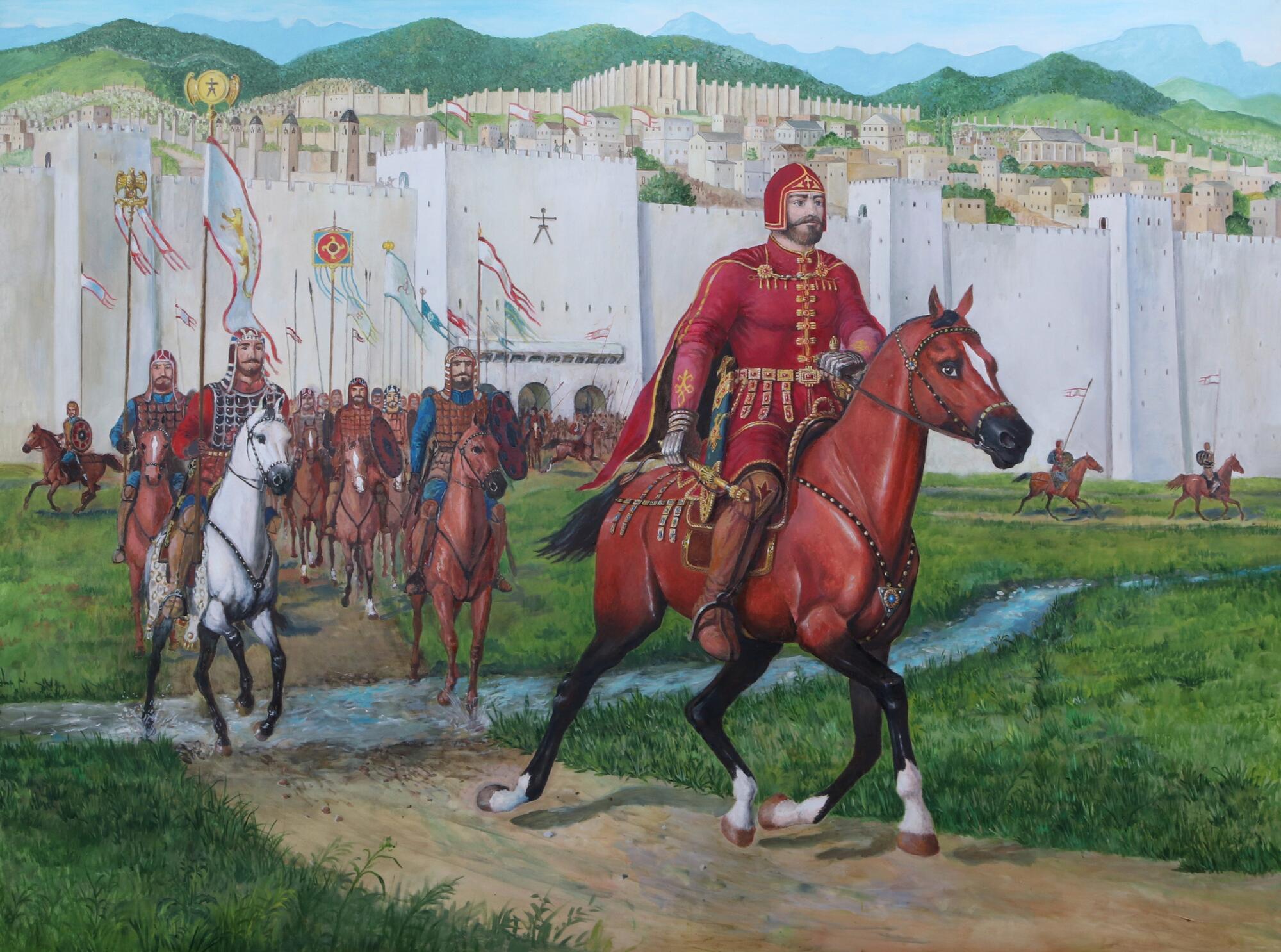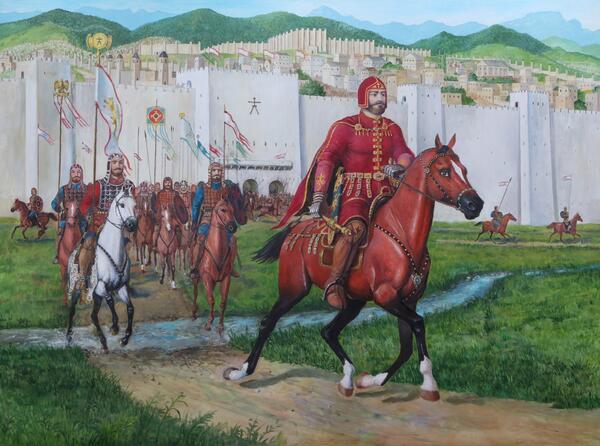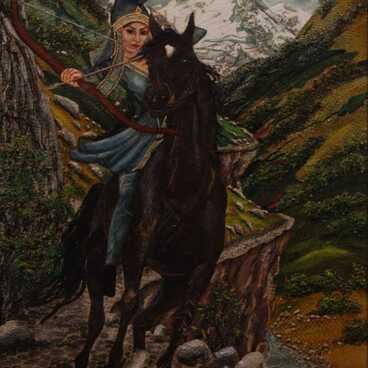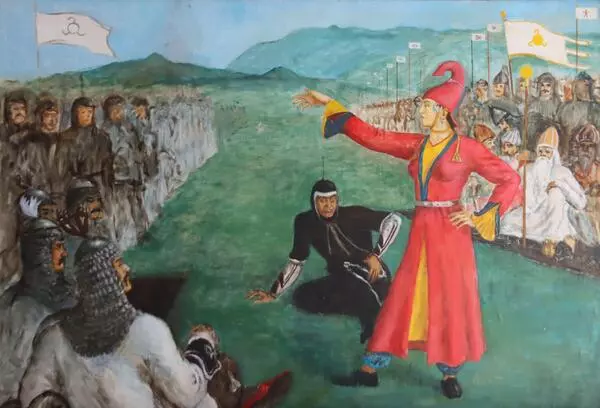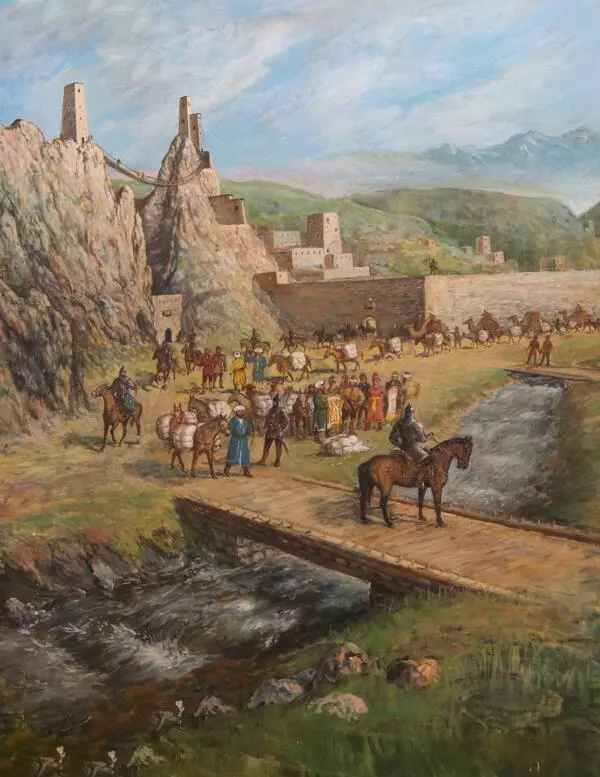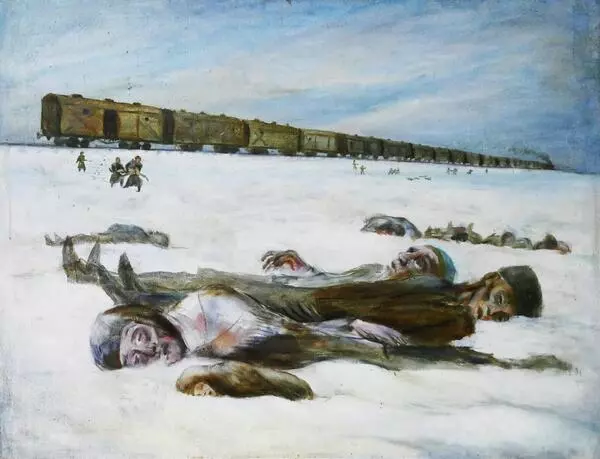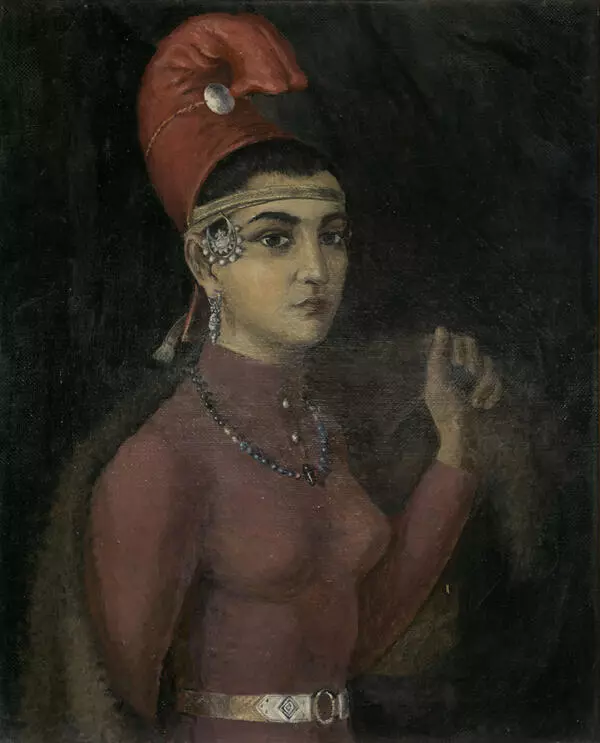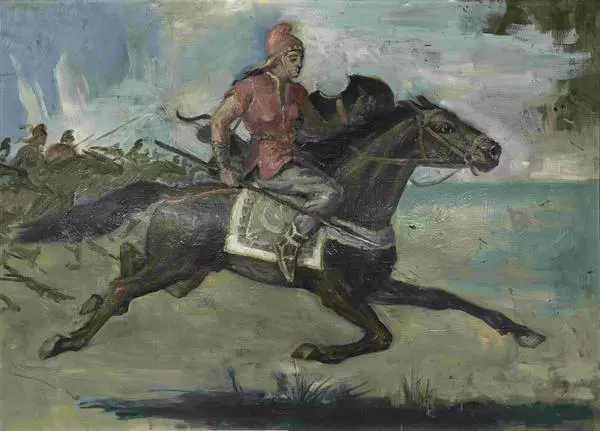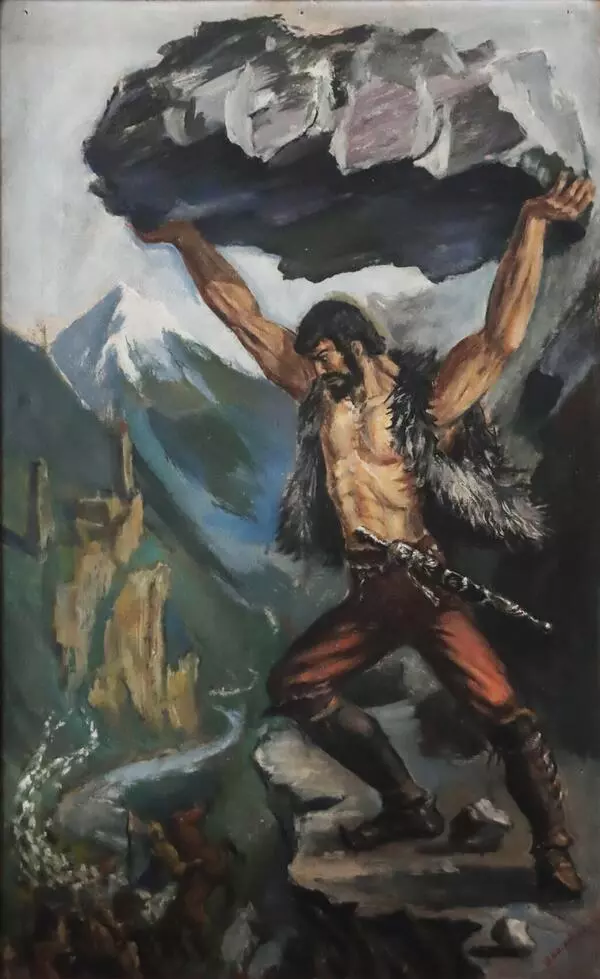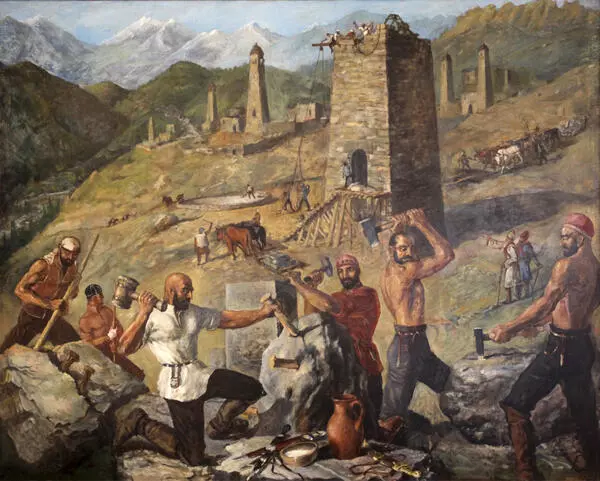Khozh-Ahmed Imagozhev painted ‘The King of Alania’ in 2019, and in 2020, it entered the museum collection.
The Alans were a group of the powerful Sarmatian tribes and were first mentioned by Roman sources in the 1st century AD. Roman historian Lucian called them ‘always severe and warlike’. In the Middle Ages, they founded their own country in the Northern Caucasus — Alania.
Khozh-Ahmed’s deep interest in the ancient Alanian culture, its traditions and legendary heroic deeds is evident in his large-scale paintings ‘The Silk Road’, ‘The Destruction of Maghas’ and ‘The King of Alania’. These paintings showcased the artist’s talent for large-scale compositions.
In the painting ‘The King of Alania’ the artist did not depict a real historical figure, but a generalized character of a proud ruler. He carefully constructed the composition to emphasize his greatness. He used several means to portray that.
First, the figure of the warrior occupies almost all the space in the central plane of the canvas. Second, the perspective here is very important: the viewer looks up at the king from below. Third, the powerful neck of the horse in a rich harness and the postural strength of the rider also contribute to the overall effect. Furthermore, to make the figure even more imposing, the artist depicted the king against a background of very light city walls, which seem to illuminate his figure.
It is important that Khozh-Ahmed Imagozhev depicted historically authentic ammunition of Alanian warriors. He not only researched Alanian costumes in museums and historical literature, he also studied real artifacts of the late 11th-early 12th century. Many of them he saw at archeological digs. To this day the artist is still independently engaged in archaeological research, participates in expeditions and studies ancient settlements and sites of the Alanian culture.
Khozh-Ahmed developed an interest in the history of his native land as a child. He recalled that during evening gatherings, his father’s friends would tell each other ancient legends and he always hung around and listened to them. The boy was interested in how his ancestors lived, what they did, how their life was arranged. And when the time came, the artist recreated many historic events in his paintings.
The Alans were a group of the powerful Sarmatian tribes and were first mentioned by Roman sources in the 1st century AD. Roman historian Lucian called them ‘always severe and warlike’. In the Middle Ages, they founded their own country in the Northern Caucasus — Alania.
Khozh-Ahmed’s deep interest in the ancient Alanian culture, its traditions and legendary heroic deeds is evident in his large-scale paintings ‘The Silk Road’, ‘The Destruction of Maghas’ and ‘The King of Alania’. These paintings showcased the artist’s talent for large-scale compositions.
In the painting ‘The King of Alania’ the artist did not depict a real historical figure, but a generalized character of a proud ruler. He carefully constructed the composition to emphasize his greatness. He used several means to portray that.
First, the figure of the warrior occupies almost all the space in the central plane of the canvas. Second, the perspective here is very important: the viewer looks up at the king from below. Third, the powerful neck of the horse in a rich harness and the postural strength of the rider also contribute to the overall effect. Furthermore, to make the figure even more imposing, the artist depicted the king against a background of very light city walls, which seem to illuminate his figure.
It is important that Khozh-Ahmed Imagozhev depicted historically authentic ammunition of Alanian warriors. He not only researched Alanian costumes in museums and historical literature, he also studied real artifacts of the late 11th-early 12th century. Many of them he saw at archeological digs. To this day the artist is still independently engaged in archaeological research, participates in expeditions and studies ancient settlements and sites of the Alanian culture.
Khozh-Ahmed developed an interest in the history of his native land as a child. He recalled that during evening gatherings, his father’s friends would tell each other ancient legends and he always hung around and listened to them. The boy was interested in how his ancestors lived, what they did, how their life was arranged. And when the time came, the artist recreated many historic events in his paintings.
